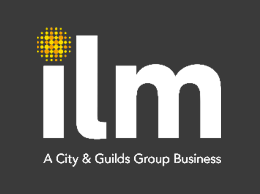In today’s rapidly evolving business landscape, the importance of continuous learning and development cannot be overstated. Organisations that invest in L&D are not only enhancing their workforce’s skills but also driving innovation, improving employee retention, and ensuring long-term success. Here we explore the significance of L&D funding, its benefits, and practical implementation strategies.
Learning and development funding is crucial for several reasons:
- Skill Enhancement: As businesses evolve, new technologies and methodologies emerge. L&D funding ensures that employees stay updated with the latest trends and skills, making them more competent and versatile.
- Employee Retention: Investing in employees’ growth fosters loyalty and job satisfaction. When employees feel valued and see opportunities for personal and professional development, they are more likely to stay with the organisation.
- Innovation and Adaptability: A well-trained workforce is better equipped to innovate and adapt to changes. L&D funding encourages a culture of continuous improvement and creativity, which is essential for staying competitive.
- Compliance and Standards: In certain industries, ongoing training is necessary to meet regulatory requirements and maintain high standards of service. Funding helps ensure compliance and quality.
The benefit of funding extends beyond individual growth to organisational success:
- Increased Productivity: Employees who receive regular training are more efficient and productive. They can perform tasks more effectively, reducing errors and increasing overall output.
- Enhanced Employee Engagement: Training programs that align with employees’ career goals and interests boost engagement. Engaged employees are more motivated and committed to their work.
- Improved Organisational Culture: A focus on learning and development fosters a positive organisational culture. It promotes collaboration, knowledge sharing, and a growth mindset among employees.
- Attracting Top Talent: Organisations known for their commitment to employee development attract high-quality candidates. Talented professionals seek employers who invest in their growth and offer opportunities for advancement.
Implementing funding effectively requires strategic planning and execution:
- Assessing Needs: Conduct a thorough assessment of the skills and knowledge gaps within the organisation. Identify areas where training is needed and prioritise them based on business goals.
- Setting Clear Objectives: Define clear objectives for the L&D programs. What skills do you want to develop? How will these skills contribute to the organisation’s success? Setting measurable goals helps track progress and evaluate the effectiveness of the training.
- Choosing the Right Programs: Select training programs that align with the identified needs and objectives. Consider various formats such as workshops, virtual action learning sets, coaching and mentoring. Ensure the programs are relevant and engaging.
- Allocating Budget: Determine the budget for funding. Consider the costs of training materials, instructors, technology, and any other resources needed. Allocate funds wisely to maximise the impact of the training.
- Monitoring and Evaluation: Regularly monitor the progress of the training programs. Collect feedback from participants and evaluate the outcomes. Adjust the programs as needed to ensure they meet the objectives and provide value.
At Futureproof, we know learning and development funding is a strategic investment that yields significant returns for both employees and organisations. Get in touch and speak to one of our L&D Managers about our own funding opportunities and where it might help your business.






